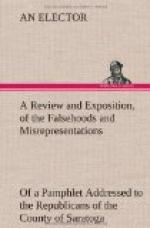The Earl of Essex who came to Ireland in 1599 with one of the largest forces of English troops that, up to then, had ever been dispatched into Ireland (18,000 men), had ascribed his complete failure, in writing to the Queen, to the physical superiority of the Irish:
“These rebels are more in number than your Majesty’s army and have (though I do unwillingly confess it), better bodies, and perfecter use of their arms, than those men who your Majesty sends over.”
The Queen, who followed the war in Ireland with a swelling wrath on each defeat, and a growing fear that the Spaniards would keep their promise to land aid to the Irish princes, O’Neill and O’Donnell, issued “instructions” and a set of “ordinances” for the conduct of the war in Ireland, which, while enjoining recourse to the usual methods outside the field of battle—(i.e. starvation, “politic courses,” assassination of leaders; and the sowing of dissension by means of bribery and promises), required for the conflict, that her weaker soldiers should be protected against the onslaught of the unarmoured Irishmen by head pieces of steel. She ordered “every soldier to be enforced to wear a murrion, because the enemy is encouraged by the advantage of arms to come to the sword wherein he commonly prevaileth.”
One of the generals of the Spanish King, Philip III, who came to Ireland in the winter of 1601 with a handful of Spanish troops (200 men), to reinforce the small expedition of de Aguila in Kinsale, thus reported on the physical qualities of the Irish in a document that still lies in Salamanca in the archives of the old Irish College. it was written by Don Pedro De Zubiarr on the 16th of January, 1602, on his return to the Asturias. Speaking of the prospect of the campaign, he wrote: “If we had brought arms for 10,000 men we could have had them, for they are very eager to carry on the war against the English. The Irish are very strong and well shaped, accustomed to endure hunger and toil, and very courageous in fight.”
Perhaps the most vivid testimony to the innate superiority of the Irishman as a soldier is given in a typically Irish challenge issued in the war of 1641. The document has a lasting interest for it displays not only the “better body” of the Irishman of that day, but something of his better heart as well, that still remains to us.
One Parsons, an English settler in Ireland, had written to a friend to say that, among other things, the head of the Colonel of an Irish regiment then in the field against the English, would not be allowed to stick long on its shoulders. The letter was intercepted by the very regiment itself, and a captain in it, Felim O’Molloy, wrote back to Parsons:
“I will do this if you please: I will pick out sixty men and fight against one hundred of your choice men if you do but pitch your camp one mile out of your town, and then if you have the victory, you may threaten my Colonel; otherwise, do not reckon your chickens before they are hatched.”




